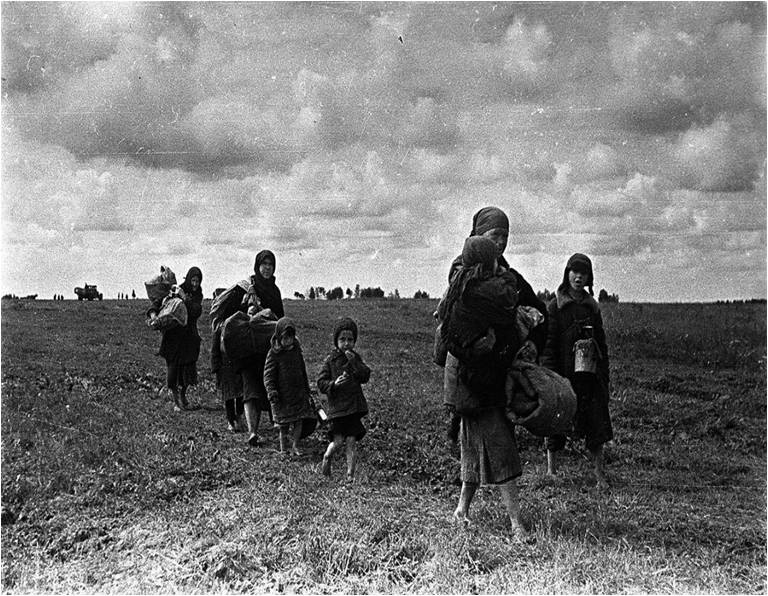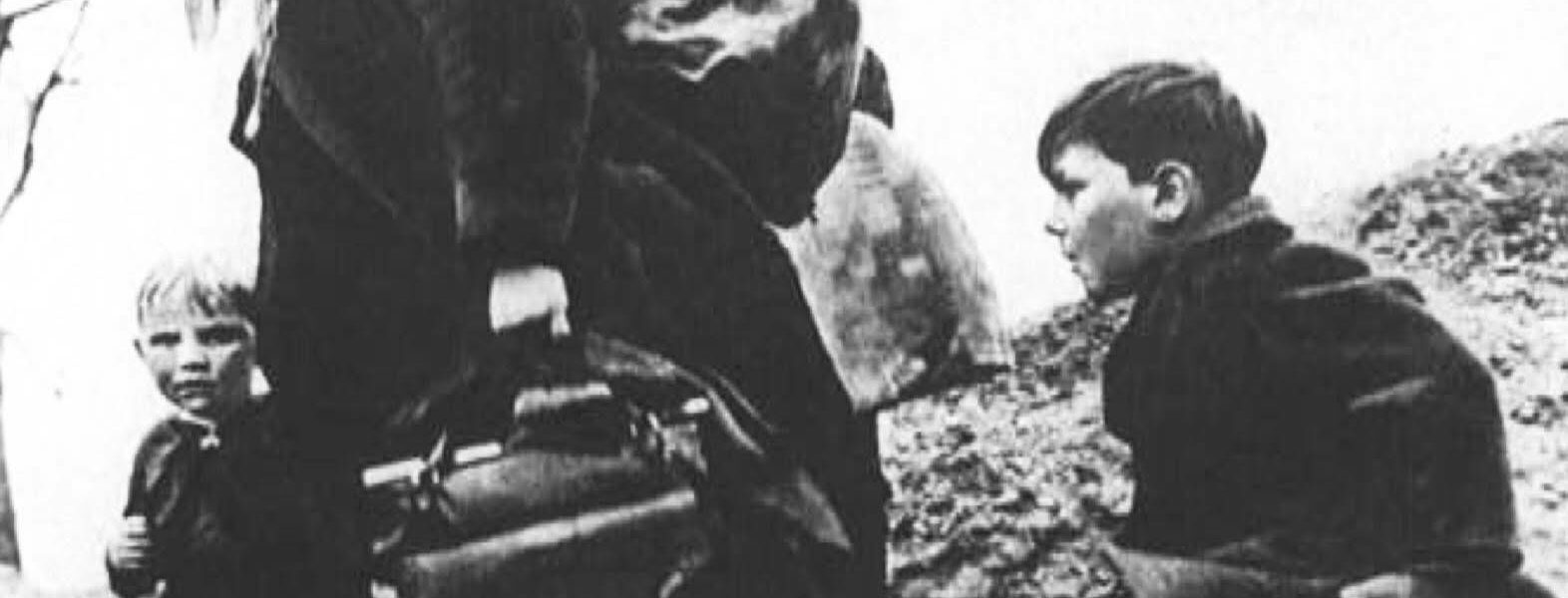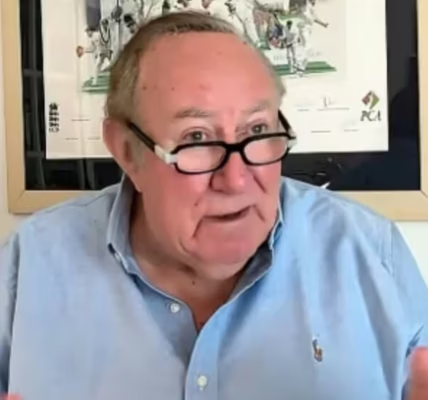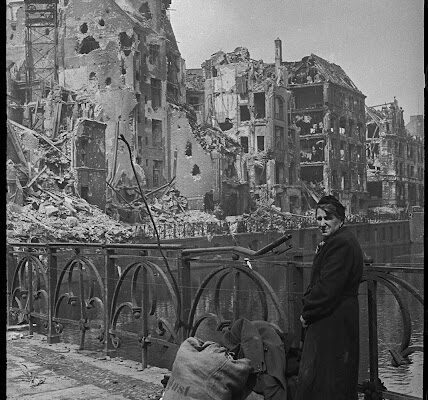- Homepage
- Uncategorized
- Germany 1945: When millions lost their homeland – The silent stories of the displaced from the East _de23
Germany 1945: When millions lost their homeland – The silent stories of the displaced from the East _de23

Germany 1945: When millions lost their homes – The silent stories of those expelled from the East
When the Second World War ended in 1945, Europe was not only a continent of ruins, but also a continent of movement. Borders shifted, states disappeared, and new ones emerged. Yet one of the greatest human tragedies of this era often unfolded silently, on trains, country roads, in overcrowded camps, and in quiet villages: the expulsion of millions of Germans from East Prussia, Silesia, Pomerania, and the Sudetenland . For many, it marked the beginning of a journey that was immeasurable, not only physically but also emotionally.
Before the war, these regions had a mixed population of Germans, Poles, Czechs, and other ethnic groups for centuries. Cities, markets, churches, and customs developed together. But with the war, everything changed. Mistrust, violence, political decisions, and feelings of revenge led to entire populations irrevocably losing their homes.
As the front lines fell and the Red Army advanced, one of the most dramatic exodus movements of modern times began in East Prussia. Families fled westward along snow-covered roads, often on foot, in horse-drawn carts, or utterly exhausted. Many had only what they could carry in a few suitcases. Houses, memories, ancestral graves – everything had to be left behind. For many, it was not just a geographical rupture, but an emotional one: a separation from their own roots.
Eyewitnesses recount how villages were abandoned overnight. Children couldn’t understand why they had to leave so suddenly. Elderly people, too weak to walk, stayed behind – often hoping to be picked up later. But not everyone was. The winter of 1944/45 was harsh and cold, and for many, the escape became a fight for sheer survival.

After the war, the expulsions were officially legitimized by international decisions. In Poland, Czechoslovakia, and other territories, the idea took hold that a new beginning was only possible if the German population was completely removed. Thus, between 1945 and 1948, hundreds of thousands were systematically taken from their homes, brought to assembly points, and sent westward by train.
Many of these transports were overcrowded, poorly organized, and plagued by disease and hunger.
Some died en route.
Others arrived in Germany—but found no home there.
Germany itself lay in ruins. Cities like Dresden, Frankfurt, Hamburg, and Cologne offered hardly any housing. The displaced people encountered those who had themselves lost everything. Instead of compassion, there was often mistrust, rejection, or silence.
The common refrain was: “We have enough problems of our own.”
Thus began life in no man’s land: shantytowns, emergency shelters, dormitories in schools or barracks. People who had once been farmers, craftsmen, traders, or teachers started almost from scratch. They had to find a place where they were not welcome and still manage to survive.
Despite all the suffering, there were also moments of new beginnings.
Many families stuck together.
They rebuilt houses, founded new communities, and opened workshops, shops, and farms.
Their dialects, songs, and traditions gradually merged into the new cultural fabric of West and East Germany.
But the topic itself remained unspoken for a long time .
It was hardly ever discussed in schools.
In families, it was talked about behind closed doors or even completely kept secret.
The pain was too great, the wounds too fresh.
Only decades later did people begin to talk about it openly.
Not to assign blame.
Not to rewrite history.
But to understand that loss and memory are part of a people’s identity , regardless of their nation.
Today, abandoned houses, overgrown gardens, and quiet cemeteries in the former German eastern territories serve as reminders of what once was.
Not as symbols
Related Posts

Unforgettable Faces: A Portrait Collection of Auschwitz Prisoners (Part 1) _de25
November 1868 | A Polish Jew, Szlama Dajczer, was born in Przedbórz. A laborer. In Auschwitz since October 16, 1941. No. 21563. He arrived on the 18th…

At just 12 years old, he was on the front line – The incredible story of Germany’s youngest soldier _de24
He was barely older than a schoolchild when he wore a uniform and held a weapon: Alfred Zech, born in 1932 in Goldenau, Upper Silesia, is considered…

Berlin 1945: The rubble women – women who rebuilt a destroyed city with their own hands _de22
When World War II ended in May 1945, Berlin lay in ruins. Houses, streets, bridges, squares – everything had been devastated by bombing raids that had plagued the city for years…

Faces of War – German Soldiers at the Front (Part 611) _de21
A German soldier carries an MG-42 machine gun on his shoulder. The photo shows a German soldier on horseback (1940). The photo shows an exhausted German officer after heavy fighting…

THE LAUGHING BUTCHER: The sadistic pleasure of Gertrude Saurer – one of the most feared female Nazi overseers _de20
In the shadow of the Holocaust, in which humanity’s darkest impulses were unleashed, figures like Gertrude Saurer emerge as a harrowing reminder of how ordinary people can become tools…

Between steel helmet and longing – everyday life in field gray (Part 612) _de19
The photo shows an exhausted German officer after heavy fighting in Stalingrad (1942). A German soldier carries an MG-42 machine gun on his shoulder. The photo shows a German…




